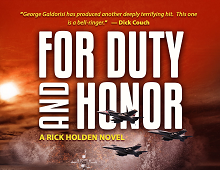We all want to know what the future will hold. While no one can really know, there is mounting evidence that writers of speculative fiction may have unique insights into the future.
As a writer, I know this because I read a great deal of speculative fiction and it feeds my writing efforts.
That’s why I was drawn to a recent article, “When Sci-Fi Comes True.” Here is a short excerpt. It will make you think:
Maybe because we’re living in a dystopia, it feels as if we’ve become obsessed with prophecy of late.
In “The Dreams Our Stuff Is Made Of: How Science Fiction Conquered the World,” Thomas Disch calls this relay between fiction and reality “creative visualization.” Businesses have started to co-opt it. The designers of the iPhone and the Kindle cite works of science fiction as inspiration. Boeing, Nike, Ford and Intel have hired prototyping, future-casting or world-building ventures for product development. As the author Brian Merchant put it on Medium recently, these companies “do what science fiction has always done — build rich speculative worlds, describe that world’s bounty and perils, and, finally, envision how that future might fall to pieces.” This is “speculative” fiction in the financial sense, too, a new way to gamble on futures.
The irony — or the proof — of this brave new business model is that sci-fi saw it coming. Dystopias have long portrayed artists being drafted into nefarious corporate labor. In “Blade Runner 2049,” for instance, the Wallace Corporation sets a woman the task of crafting memories — not for characters in a novel, but for androids.
It’s a touch self-congratulatory for sci-fi creators to imply that they’re the unacknowledged designers of the world. But they do seem to have a knack for innovation. The genre has predicted satellite communication, army tanks, tablets, submarines, psychotropic pills, bionic limbs, CCTV, electric cars and video calling. You can find dozens more examples of sci-fi-minted gadgetry on the internet, which is itself a prime example of the phenomenon. The word “cyberspace” first appeared in the cyberpunk novel “Neuromancer” (1984), to describe “a consensual hallucination …. A graphic representation of data abstracted from the banks of every computer in the human system.” Its author, William Gibson, is our Nostradamus: His novels have prophesied reality television, viral marketing and nanotechnology.
Want more? You can read it here











